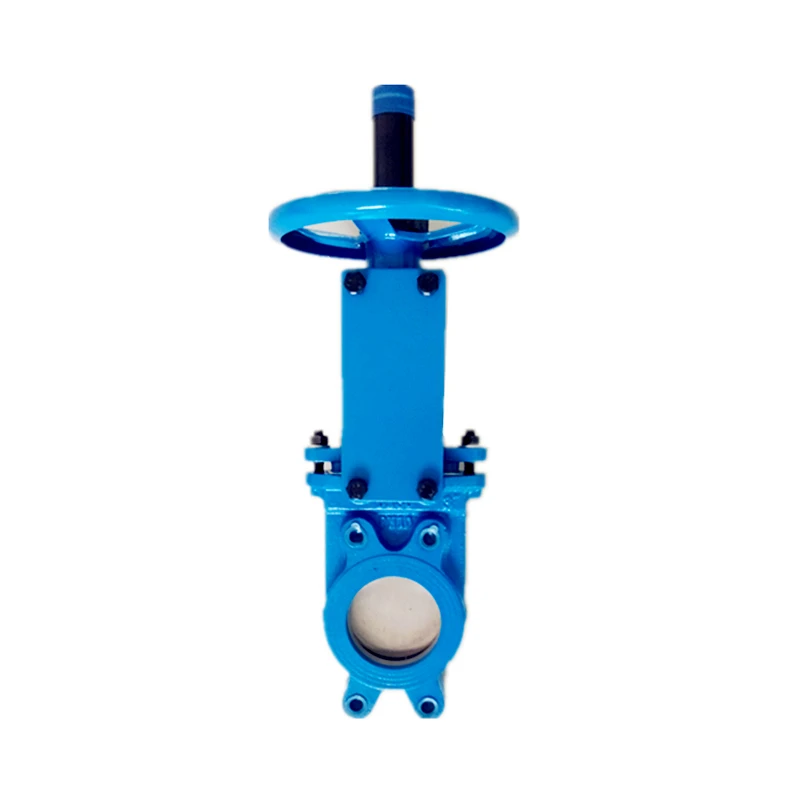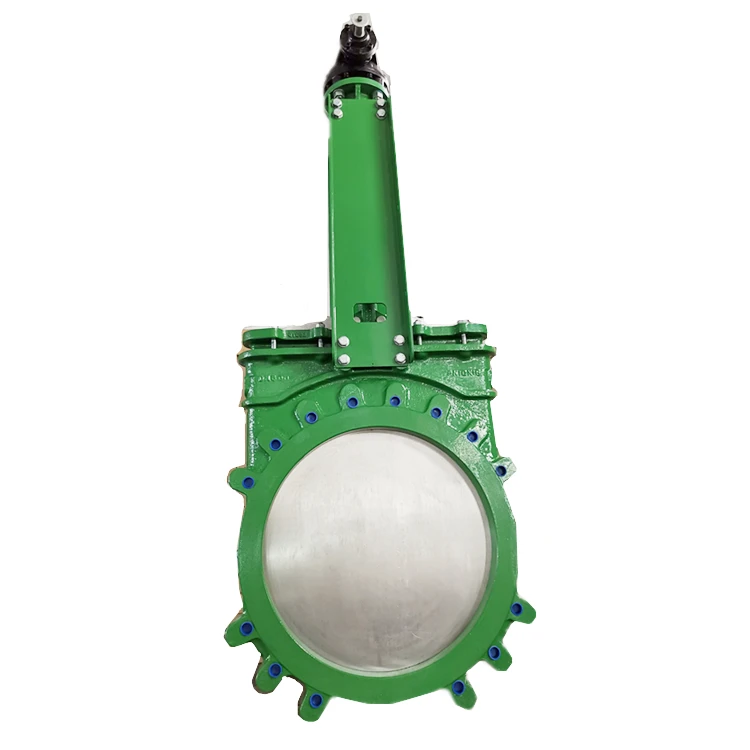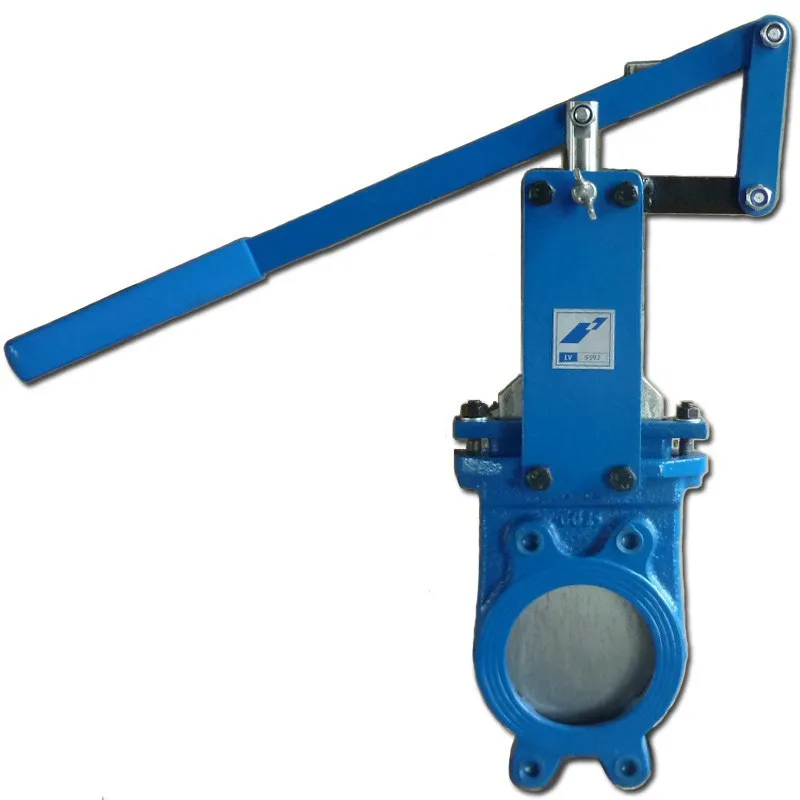Choosing the Right Knife Gate Valve: Air Operated vs Ceramic Lined
Key Takeaways
Selecting the ideal knife gate valve involves a thorough understanding of specific operational parameters and material characteristics. The air operated knife gate valve offers advantages such as rapid response and ease of automation, making it suitable for applications requiring frequent cycling. In contrast, the ceramic lined knife gate valve provides exceptional resistance to abrasion and corrosive environments, enhancing durability in demanding settings. Understanding the distinction between bidirectional and unidirectional options is crucial for ensuring effective flow management and system integrity. Bidirectional designs allow flow in both directions, vital for certain systems requiring flexibility, while unidirectional valves prevent backflow efficiently. When considering where to purchase a knife gate valve, it is advisable to source from reputable suppliers that ensure quality, reliability, and post-purchase support. Factors such as size, pressure ratings, and compatibility with existing systems are paramount when determining the best choice for operational needs. Prioritizing these aspects will result in improved performance and longevity of pipeline systems.
Choosing Between Air Operated and Ceramic Lined Knife Gate Valves
When selecting between air operated knife gate valves and ceramic lined knife gate valves, several factors merit consideration. Air operated knife gate valves excel in applications requiring rapid actuation and precise control. They utilize compressed air to automate the opening and closing process, promoting efficiency in operational environments. Ideal for systems that demand quick responses, these valves are preferred in industries such as wastewater treatment and chemical processing. In contrast, ceramic lined knife gate valves are engineered for harsher conditions involving abrasive materials. The ceramic lining provides resistance against wear and corrosion, making these valves suitable for handling slurries or viscous fluids common in mining or pulp applications.
A comparative analysis reveals distinct benefits associated with each type. The choice of valve should align with the specific requirements of the system, including pressure ratings, medium characteristics, and maintenance considerations. Emphasizing the durability of ceramic lines may influence decisions where longevity is paramount, while the functionality of air operation can appeal to operations emphasizing automation. It is crucial to evaluate these differences in relation to the application needs to make an informed decision on which valve type will deliver optimal performance within your specific operational context.

Understanding Bidirectional vs Unidirectional Knife Gate Valves
When selecting a knife gate valve, it's essential to understand the difference between bidirectional and unidirectional designs. Bidirectional knife gate valves allow flow in both directions, making them versatile solutions for systems where flow direction can change. This flexibility is beneficial in applications requiring regular maintenance or systems where the process flow might reverse unexpectedly. Conversely, unidirectional knife gate valves are designed to permit flow in one direction only. This type can be crucial in preventing reverse flow, which can lead to damage or malfunction in certain systems.
Typically, bidirectional valves feature a robust construction that accommodates the stresses from flow in both directions. Their design often enables easier installation and maintenance since they do not need to be oriented according to flow direction. In contrast, unidirectional valves may offer enhanced sealing capabilities, providing better performance in applications where backflow may cause significant problems.
"Choosing the right valve type depends ultimately on the specific requirements of your system and its operational characteristics."
Considering these factors is vital when determining which valve to integrate into your system. Be sure to assess your existing piping configurations and operational needs thoroughly before making a decision. Selecting between these types significantly impacts system efficiency, performance, and durability.

Where to Buy the Right Knife Gate Valve for Your Needs
Acquiring a knife gate valve tailored to specific application requirements involves several options. Numerous suppliers specialize in air operated knife gate valves and ceramic lined knife gate valves, both crucial for various industrial uses. The decision to choose a supplier may depend on local accessibility and product availability. Online marketplaces provide a vast array of options, allowing buyers to compare prices and assess product specifications conveniently. Companies like AVK offer reliable products, including the renowned AVK knife gate valve line, known for durability and performance. Industry-specific distributors cater to specialized needs, ensuring you receive the appropriate assistance regarding pressure ratings, material compatibility, and operational features. When purchasing, consider requesting product samples or specifications sheets to evaluate quality firsthand. This approach guarantees that the selected valve meets your operational requirements effectively, whether you opt for a bidirectional or unidirectional knife gate valve design.

Key Considerations When Selecting a Knife Gate Valve
The selection of a knife gate valve demands careful consideration of various factors critical to its performance and application. One should evaluate the air operated knife gate valve versus the ceramic lined knife gate valve. Air operated variants typically offer quicker actuation and simplify integration into automated systems. They provide precise control, making them suitable for dynamic processes. Conversely, a ceramic lined option is ideal for applications involving abrasive materials, offering enhanced durability and resistance to wear. The bidirectional versus unidirectional capability also plays a crucial role in selection; bidirectional valves allow flow in both directions, advantageous in systems requiring flexibility, whereas unidirectional valves restrict flow, enhancing system safety and integrity. Assessing the specific operating environment is essential; factors such as pressure ratings, chemical compatibility, and temperature range directly influence the choice of valve material and design. Evaluating your application requirements will guide you in selecting a valve that ensures both efficiency and longevity in operation.

Conclusion
Understanding the choice between air operated knife gate valves and ceramic lined knife gate valves is crucial for optimizing performance in specific applications. The air operated knife gate valve excels in scenarios requiring efficient and precise control over fluid flow, catering primarily to industries with dynamic pressure changes. Its design facilitates bidirectional flow, which enhances operational flexibility. In contrast, the ceramic lined knife gate valve is ideal for handling abrasive materials due to its enhanced durability and resistance to wear. This type provides a reliable unidirectional fluid flow management system, making it suitable for specific applications where material integrity is paramount.
Consideration of whether to use a bidirectional or unidirectional valve also informs the selection process. A bidirectional knife gate valve allows fluid movement in both directions, providing versatility suited for diverse piping systems; however, it may introduce complexity in some setups. Conversely, a unidirectional knife gate valve ensures a more straightforward installation and operation but limits flow direction.
Availability of these valves varies by supplier and region. It is advisable to source from reputable distributors who specialize in industrial flow control solutions to ensure quality and compliance with relevant standards.
Evaluating your needs concerning these parameters will aid significantly in selecting the most appropriate knife gate valve for your system requirements.
FAQs
What are the main differences between air operated and ceramic lined knife gate valves?
Air operated knife gate valves utilize pneumatic force for quick and efficient operation, making them suitable for high-frequency use. Ceramic lined variations feature a protective coating that enhances resistance to wear and corrosion, ideal for abrasive materials.
When should I choose a bidirectional knife gate valve over a unidirectional one?
Bidirectional knife gate valves can handle flow from both directions without compromising performance, making them versatile for various applications. Unidirectional options are suitable when flow direction is consistent, offering straightforward installation and operation.
Where can I buy a reliable knife gate valve?
Reliable options for purchasing knife gate valves include specialized industrial supply stores, reputable online marketplaces, and manufacturers’ direct sales. Be sure to review product specifications to ensure compatibility with your operational needs.
What key considerations should I keep in mind when selecting a knife gate valve?
Consider the operating pressure, temperature ratings, compatibility with the media being transported, and maintenance requirements. Additionally, assess whether you require an air operated or ceramic lined variant to best fit your specific application.
Are there specific applications where a ceramic lined knife gate valve is preferred?
Ceramic lined knife gate valves are particularly preferred in applications involving abrasive slurries or corrosive chemicals due to their enhanced durability and resistance features.




